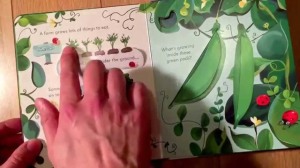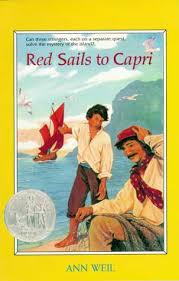Good children’s literature and read alouds are an essential component of a Charlotte Mason education. Literature is foundational to learning language, building vocabulary, discovering the world and ideas and stimulating creative imaginations!
Reading aloud is a vital skill and here are some tips to making story time stimulating and fun ~
 Pictures – Your child’s first books should have interesting illustrations. Many children’s books have amazing artistic pictures which inspire children’s imaginations. Non-fiction books need bright, clear photos or illustrations. Don’t hesitate to stop and enjoy each illustration and use them to connect your child with the story. Very young kids love to find things in detailed pictures. “Can you find the little yellow duck?” “Where is the red bucket?” “How many blue balls can you see?” Older children enjoy copying illustrations they find inspiring. I often encourage my young kids to illustrate their narrations.
Pictures – Your child’s first books should have interesting illustrations. Many children’s books have amazing artistic pictures which inspire children’s imaginations. Non-fiction books need bright, clear photos or illustrations. Don’t hesitate to stop and enjoy each illustration and use them to connect your child with the story. Very young kids love to find things in detailed pictures. “Can you find the little yellow duck?” “Where is the red bucket?” “How many blue balls can you see?” Older children enjoy copying illustrations they find inspiring. I often encourage my young kids to illustrate their narrations.
 Sounds – When reading aloud to your children, you and your kids should try make sound effect noises for animals, machines, weather and simple things that may happen in the story such as knocking on a door. Young children love to participate in the stories with all the sounds and actions. Boys, especially seem genetically created to make sound effects, so use it to make your stories come alive!
Sounds – When reading aloud to your children, you and your kids should try make sound effect noises for animals, machines, weather and simple things that may happen in the story such as knocking on a door. Young children love to participate in the stories with all the sounds and actions. Boys, especially seem genetically created to make sound effects, so use it to make your stories come alive!
Accents and voices – Be ridiculous and make funny voices and accents for different characters.  My teenagers and young adult children still smile when they remember my ridiculous Italian accent when I read “Red Sails to Capri” and my over-the-top American accent (we are South Africans, so this was unusual for us) when I read “Strawberry Girl“. Even animal characters need their own voices. Go ahead and dramatize the story with your voice — your kids will love it!
My teenagers and young adult children still smile when they remember my ridiculous Italian accent when I read “Red Sails to Capri” and my over-the-top American accent (we are South Africans, so this was unusual for us) when I read “Strawberry Girl“. Even animal characters need their own voices. Go ahead and dramatize the story with your voice — your kids will love it!
Tone and emotion – Ue your voice to create moods and convey feelings. Read aloud and vary your voice for effect — soft and slow for scary sections, high, excitied voice for a happy piece, or slow and low voice to convey someone who is sad or depressed.
Pause – Use a pause to create tension and encourage your child’s participation. A young child will jump in with a prompt when the story is paused for a brief moment — “The three bears walked into the bedroom and saw …” pause … “Goldilocks!” I loved using cliffhangers, and my children would beg me to continue. Isn’t this the true joy of learning through literature?
And if all else fails, invest in audiobooks. Librivox provides free audiobooks, but check the version before downloading as some books are recorded with monotone voices and dreary pacing.
Encourage your children to read aloud to you with expression.
Wishing you many happy years of amazing reading aloud in your homeschooling!
Blessings, Nadene
Pingback: F-Words to Include in Homeschooling | Practical Pages
Only thing I’d add to your list is to keep reading–even when you think they might be “too old” to enjoy that any more. My kids have hit the teens and all I have to do is ask, “Want me to read something?” Both come running. Some of our most precious times are sitting on the couch with a good book.
LikeLike
How true, @Rhoda!My homeschool graduate and high schooler also love to sit in for read alouds. We started reading a family read aloud at the dinner table after the meal, and it is a special time for us all!
LikeLike